【By rapid stirring】
- Add alginate gradually into the water while stirring using a high speed propeller-type stirrer.
- Keep stirring the solution until all the alginate material is dissolved.
Alginic acid, Alginate salts, and Alginate derivatives (collectively referred to as "Alginate") can be used in their powdered form or dissolved in water to create a solution for various applications. In many cases, the amount of alginate used is minimal (typically around 1-2% of the final product), so achieving uniform distribution of alginate throughout the mixture is crucial to fully harness its functionality.
【When incorporating as a powder】
Simply adding a small quantity of alginate powder directly into the mixture may not result in an even distribution. To ensure uniform mixing, start by setting aside a portion of the main ingredients (approximately 10%) and mix the required amount of alginate powder into it as a primary blend. Then, reintegrate this mixture into the overall mixture to achieve a more even distribution of alginate.
【When using as a water solution】
Alginate is a water-soluble polymer that, when dissolved in water, forms a viscous colloidal solution. When using alginate as a thickening agent or gelling agent, it is essential to ensure that the alginate is thoroughly dissolved, creating a homogeneous aqueous solution. Alginate is inherently highly hydratable and has good water solubility. However, due to its high hydratability, it can sometimes form lumps or be perceived as 'difficult to dissolve' in certain situations.
In this context, we will explain the fundamental methods for effectively dissolving alginate to help you make the most of its properties.
Table 1: Solubility of alginate in various types of solvent
| Type of Alginate | Solubility | ||
| Cold & Hot water | Fats & Oils | Organic solvents | |
| Alginic Acid | Insoluble | Insoluble | Insoluble |
| Sodium Alginate | Soluble | Insoluble | Insoluble |
| Potassium Alginate | Soluble | Insoluble | Insoluble |
| Calcium Alginate | Insoluble | Insoluble | Insoluble |
| Ammonium Alginate | Soluble | Insoluble | Insoluble |
| Propylene Glycol Alginate | Soluble | Insoluble | Insoluble |
Table 2: Solubility of alginate in various types of solution
| Solubility | |||
| In an acidic system | In an alkaline system | In a solution with polyvalent cations | |
| Fruit juice, Sake, Salad dressing, etc. | Lye water, etc. | Hard water, Milk, etc. | |
| Alginic Acid | Insoluble | Soluble | Insoluble |
| Sodium Alginate | Insoluble | Soluble[1] | Insoluble |
| Potassium Alginate | Insoluble | Soluble[1] | Insoluble |
| Calcium Alginate | Insoluble | Insoluble[2] | Insoluble |
| Ammonium Alginate | Insoluble | Soluble[1] | Insoluble |
| Propylene Glycol Alginate | Soluble | Soluble[3] | Soluble |
Notice
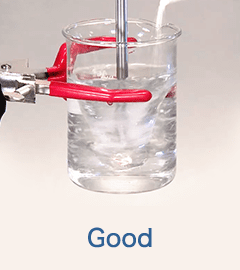
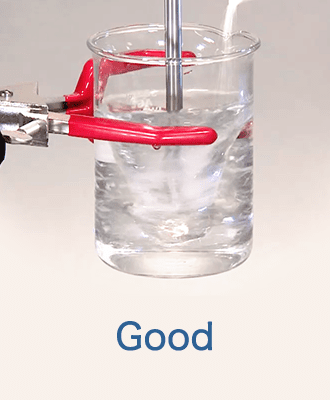

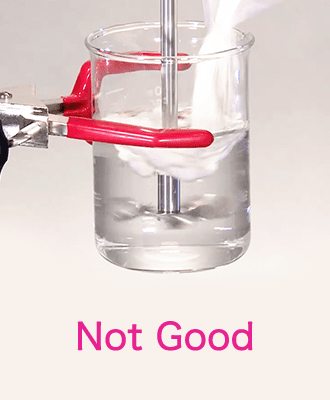
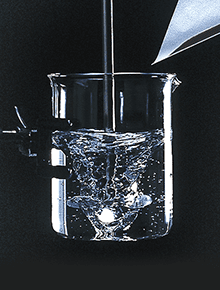
Notice
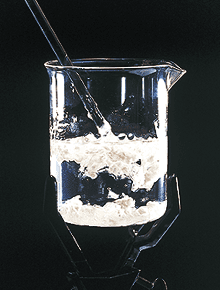
If the alginate is not dispersed uniformly, the powder surface is only wetted and lumps are generated. It takes a considerable time for the lumps to dissolve homogeneously.
If alginate lumps are left in water for a long time, they will swell and dissolve.
Premixed alginate can be easily dispersed with slow stirring speed, lumps are not generated.
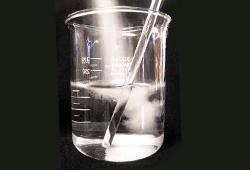
Lumps are not generated after the alginate powder starts to swell as the alginate and sugar are well dispersed.
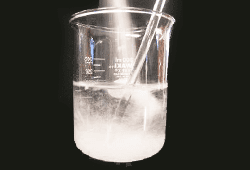
Leave or maintain slow stirring, until a smooth alginate solution is obtained.
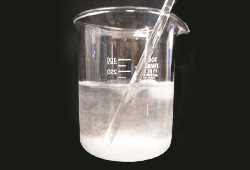
Notice
Add alcohol to the alginate powder and make a slurry. Increasing the quantity of alcohol makes the alginate easier to disperse.
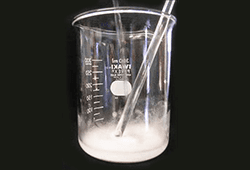
Add water to the slurry, with stirring, to avoid precipitation of the alginate powder.
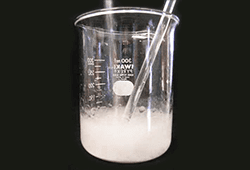
Leave or maintain slow stirring, until a smooth alginate solution obtained.
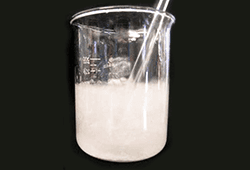
Notice
Should you have any questions,
please feel free to contact us.
Inquiries about the products